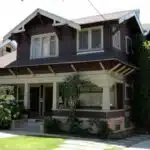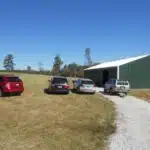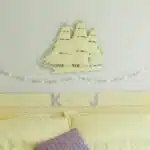Gardening enthusiasts are always looking for new and creative ways to enhance the beauty of their garden. One such way is by using trellises, which not only add aesthetic value but also provide support for climbing plants. Obelisk trellises, in particular, are becoming increasingly popular due to their versatility and simplicity in design. These structures can be used to grow a variety of plants such as clematis, roses, and morning glories. In this article, we will discuss how to make a basic DIY obelisk trellis that can be customized to suit your garden’s needs.
Creating an obelisk trellis may seem daunting at first, but with the right tools and materials, it is a fairly simple process. The construction involves using wooden stakes or metal rods arranged in a pyramid shape with crossbeams connecting them. This creates a sturdy structure that can withstand the weight of heavy vines while still adding visual appeal to your garden space. Whether you’re an experienced gardener or just starting out on your gardening journey, learning how to make an obelisk trellis is a skill that will serve you well and bring charm to your outdoor space.
The Benefits Of Using A Trellis In Your Garden
Trellises are structures that can provide many benefits in urban gardens. They can be used to support a variety of climbing plants, including vines, vegetables, and flowers. One of the main advantages of using a trellis is that it maximizes space in small gardens by allowing plants to grow vertically instead of horizontally. This means you can plant more vegetation per square foot and increase yields.
Trellises also provide aesthetic value to any garden. They come in different designs that cater to various types of plants, making them an excellent addition to any landscape. Some trellis designs are perfect for training vegetables like tomatoes or cucumbers, while others work well for supporting flowering vines such as roses or wisteria. By choosing the right trellis design, you can enhance your garden’s beauty and create a focal point that adds character and charm.
In addition to their functional and aesthetic benefits, trellises can also help protect plants from pests and disease. By lifting plants off the ground and exposing them to more air circulation and sunlight, trellises promote healthy growth and prevent fungus growth. Furthermore, they make harvesting easier by keeping fruits off the ground where they are less prone to rotting or being eaten by rodents. With all these benefits, it’s no wonder why trellises have become a popular choice among urban gardeners looking for cost-effective ways to maximize their space while maintaining aesthetics.
By choosing the right location for your obelisk trellis, you can ensure its success in supporting climbing plants effectively.
Choosing The Right Location For Your Obelisk Trellis
Having discussed the benefits of using a trellis in your garden, it is important to consider choosing the right location for your obelisk trellis. The primary benefit of height is that it allows plants to grow vertically without taking up too much horizontal space. This is particularly useful when you have limited space in your garden or want to create a focal point that draws the eye upwards.
When choosing the location for your obelisk trellis, it is important to consider the needs of the plants you want to train on it. Some plants require full sun exposure while others prefer partial shade. You should also take into account factors such as wind direction and soil quality as these can affect plant growth and stability.
Overall, proper obelisk placement can enhance both the aesthetic appeal and functionality of your garden. Whether you are looking to add dimension and visual interest or improve plant growth, an obelisk trellis can be a valuable addition to your landscape design.
4 Tools and Materials Needed for Construction:
- Measuring tape
- Saw
- Drill
- Wood screws
With these basic tools and materials, you can easily construct a DIY obelisk trellis that will provide support for climbing plants while adding visual interest to your garden space.
Moving forward, let’s discuss the specific tools and materials needed for constructing an obelisk trellis in more detail.
Tools And Materials Needed For Construction
Suppose you’re looking to build your own obelisk trellis. In that case, you will need to have the right tools and materials on hand before starting construction. Given that this is a DIY project, it’s important to ensure you have everything you need before beginning so that there are no unnecessary trips to the hardware store.
Firstly, let’s talk about materials. The most crucial thing you’ll need for this project is wood. You can use either cedar or redwood for this project since they are both weather-resistant and durable woods. You’ll also need some paint or stain if you want to add color to your trellis. Other essential materials include screws, wood glue, and brackets.
Next up are the tools necessary for building your obelisk trellis. To construct the base of the trellis, you’ll require a saw for cutting wood into appropriate sizes and shapes. A drill will be necessary for making holes in the wood where screws will go in. You may also require a leveler to make sure everything is straight and properly aligned as well as clamps and measuring tape.
With all of these materials and techniques at your disposal, constructing an obelisk trellis should be easy enough for any DIY enthusiast with some basic woodworking skills. Now that we’ve discussed what’s needed let us move on to a step-by-step guide to building the base of the trellis!
Step-By-Step Guide To Building The Base Of The Trellis
To begin building the base of your obelisk trellis, you will need to gather your materials and tools. The necessary materials include four wooden stakes, galvanized screws or nails, and chicken wire or mesh. The first step is to place the four stakes in a square formation where you want your trellis to stand. You can use building techniques such as digging holes with a post hole digger or simply hammering the stakes into the ground.
Once the stakes are securely in place, you can begin attaching the chicken wire or mesh to create the base of your trellis. Be sure to use design variations such as creating a taller backside for climbing plants to reach maximum height. Use galvanized screws or nails to attach the wire/mesh to each stake tightly. For extra support, it’s recommended that you alternate which stake supports each side of the wire/mesh panel.
When building any type of structure for your garden, it’s important to consider its longevity and durability. To ensure your obelisk trellis lasts through multiple growing seasons, make sure that all materials are weather-resistant and treated for outdoor use. It’s also recommended that you add crossbeams for extra support before moving on to adding additional layers of mesh/chicken wire in subsequent sections of this guide.
Adding The Crossbeams For Extra Support
As you add the crossbeams to your obelisk trellis, it’s important to keep in mind that these beams will provide extra support for the plants growing on your structure. The crossbeams will also add a decorative touch to your trellis, giving it a more professional and polished look.
When selecting different designs for your crossbeams, consider using wood or metal materials. Wood is a popular choice because it can be easily painted or stained to match the color of your garden. Metal is another great option because it’s durable and long-lasting. Both wood and metal crossbeams can be found in various sizes and shapes, allowing you to customize your obelisk trellis according to your unique style.
Incorporate decorative accents into the design of your obelisk trellis by adding scrollwork or other ornate designs to the crossbeams. This will give your trellis an elegant and sophisticated look that will complement any garden space. Now that you have added the crossbeams, the next step is creating the pyramid shape of your obelisk trellis.
Creating The Pyramid Shape
To create the pyramid shape of your obelisk trellis, you will need to begin by connecting the four legs at the top with a crossbeam. This can be done by drilling holes into each leg and then attaching the beam with screws or bolts. Once the crossbeam is securely in place, you can start adding additional decorative accents to your trellis, such as finials or ornamental caps.
One alternative to constructing an obelisk trellis from scratch is to repurpose an existing structure. For example, a wooden ladder can be propped up against a wall and decorated with climbing plants to create a similar effect. Alternatively, metal garden obelisks can be purchased online or in stores for those who prefer not to build their own.
With the pyramid shape of your obelisk established and any decorative elements added, it is time to secure the trellis to the ground. One way to do this is by digging a hole at each corner of the base and filling it with cement before inserting the legs. Another option is to use metal stakes or brackets anchored into the ground. Regardless of which method you choose, make sure that your obelisk is firmly anchored so that it can withstand wind and weather without toppling over.
Securing The Obelisk Trellis To The Ground
When choosing the right anchoring materials for an obelisk trellis, it is important to consider the weight of the trellis and the soils it will be planted in. For example, heavier trellises may require a larger anchoring material than lighter trellises. Additionally, digging the foundation holes for an obelisk trellis should be done with a post hole digger or manual auger to ensure the holes are of a uniform depth and diameter. The holes should be dug at least 12 inches deep, and the diameter should be twice the width of the anchoring material being used. Finally, the obelisk trellis should be placed into the hole and backfilled with soil, then tamped down firmly.
Choosing The Right Anchoring Materials
When it comes to securing an obelisk trellis to the ground, choosing the right anchoring materials is crucial. The materials you choose will determine how well your trellis holds up against wind and rain. Before making a decision, consider the type of soil in your garden and the weight of your obelisk trellis.
One option for anchoring an obelisk trellis to the ground is using metal stakes. These can be hammered into the soil and provide a sturdy base for your trellis. However, they may not be ideal for rocky or hard soils. Another option is using cement or concrete as an anchor. This provides a strong hold but may require more installation work and can be difficult to remove if needed.
Ultimately, choosing the right material for securing your obelisk trellis to the ground is important for ensuring its longevity and stability in your garden. Be sure to take into account factors such as soil type, weather conditions, and weight of the trellis when making your decision. With these installation tips in mind, you’ll be able to enjoy a beautiful and secure obelisk trellis in your garden for years to come.
Digging The Foundation Holes
Now that you’ve chosen the right material to secure your obelisk trellis to the ground, it’s time to move on to another crucial step in installation: digging the foundation holes. The depth and width of these holes will depend on the size and weight of your trellis, so proper measurements are key. As a garden and landscaping writer, it’s important to note that alternative designs for obelisk trellises may also require different hole sizes.
When digging the foundation holes for your obelisk trellis, it’s important to take into account factors such as soil type and weather conditions. If you live in an area with heavy rainfall or strong winds, consider making the holes deeper or wider for added stability. Additionally, be sure to remove any rocks or debris from the soil before installing your trellis.
Once you’ve dug the appropriate foundation holes for your obelisk trellis, it’s time to securely anchor it in place using the materials you’ve chosen. Remember that proper installation is key for ensuring longevity and stability of your trellis in your garden. By following these tips and taking care during installation, you’ll be able to enjoy a beautiful and sturdy obelisk trellis for years to come.
Painting Or Staining The Trellis For Longevity
After securing the obelisk trellis to the ground, it is important to protect it from the elements by applying weatherproofing techniques. This ensures that it stays sturdy and beautiful for years to come. There are various ways to weatherproof your trellis, but the most common method is by applying a coat of sealant or paint.
Sealing your trellis with a water-resistant sealant will prevent moisture from penetrating the wood and causing rot or decay. On the other hand, painting your trellis with a high-quality exterior paint adds not only protection but also decorative finishes that can complement your garden’s style. When choosing a paint, make sure it is specifically designed for outdoor use and can withstand harsh weather conditions.
Adding decorative finishes to your obelisk trellis can enhance its look and make it stand out in your garden. You can customize the color of the paint or stain based on your preference and garden style. You can also add embellishments such as climbing plants or flowers, string lights, or hanging baskets to make it more visually appealing. By incorporating these elements, you can create a unique and personalized obelisk trellis that perfectly fits your garden’s aesthetic.
As you have learned about securing and weatherproofing an obelisk trellis, now you are ready to customize its look based on your garden style. With these tips in mind, you can confidently create a beautiful centerpiece in your garden that not only serves as a practical support for climbing plants but also adds charm and character to your outdoor space.
Customizing Your Obelisk Trellis To Fit Your Garden Style
Now that you have learned how to make a basic DIY obelisk trellis, it’s time to customize it to match your garden style. One of the first things to consider is whether you want your obelisk trellis made of metal or wood. Metal obelisks provide a modern and sleek look and are great for contemporary gardens, while wooden ones give off a rustic and natural feel, perfect for traditional gardens.
Another aspect to consider when customizing your obelisk trellis is the style that you want to achieve. Do you prefer a rustic look or something more modern? If you prefer a rustic style, using reclaimed wood or rough-hewn timber can add character and charm to your garden. For those who want a modern look, using clean lines and geometric shapes on the obelisk can help achieve this aesthetic.
Lastly, don’t be afraid to experiment with different materials and colors when customizing your obelisk trellis. Adding colorful flowers or vines in contrasting colors can create an eye-catching display in any garden setting. Furthermore, incorporating decorative elements such as birdhouses or lanterns can also enhance the overall look of your trellis.
As you start customizing your obelisk trellis, keep in mind that there are no hard-and-fast rules. The goal is to create an aesthetically pleasing addition that fits seamlessly into your garden space while serving its functional purpose effectively. In the next section, we’ll explore ways in which you can plant and train vines to climb up your new trellis structure.
Planting And Training Vines To Climb The Trellis
- When selecting vines for a trellis, it is important to consider the climate and sunlight that the vine will need to thrive.
- Training techniques are essential for vines to climb the trellis and should be done carefully to ensure the vine is properly guided and supported.
- DIY obelisk trellises are a great way to grow vines with a simple and effective structure.
- Installing the trellis correctly is the first step in creating a successful vine covered trellis.
Selecting Vines
Choosing the perfect vine to climb your DIY obelisk trellis can be an exciting and rewarding experience. With so many types of vines available, it’s important to consider factors such as color, texture, and care requirements. Some popular vine options for this type of trellis include clematis, honeysuckle, and morning glory.
When selecting vines based on color and texture, it’s essential to take note of the surrounding landscape. Consider how the colors and textures of the vine will complement or contrast with nearby plants or hardscaping elements. For example, a vibrant purple clematis would look stunning against a white wall while a delicate honeysuckle with its soft pink blooms would pair well with other pastel-hued flowers.
In addition to aesthetics, it’s important to choose vines that are suitable for your climate and soil conditions. Be sure to research each plant’s care requirements before making a final decision. This can help ensure that your chosen vine thrives on your DIY obelisk trellis for years to come.
Training Techniques
Now that you’ve chosen the perfect vines to climb your DIY obelisk trellis, it’s time to discuss training techniques. Different training techniques can be used to encourage vines to grow in certain directions or patterns. These techniques not only help maintain the structure and design of the obelisk trellis but also promote healthy growth and blooming of the vine.
One common training technique is tying. This involves using soft materials such as twine or garden tape to gently tie the vine to the trellis structure. Tying helps guide the vine in a specific direction and prevents it from tangling or growing haphazardly. It’s important not to tie too tightly, as this can damage or break the vine.
Another technique is pruning. Pruning involves cutting back certain parts of the plant, such as dead or diseased branches, in order to promote healthy growth and encourage blooming. Pruning can also help control the size of the plant and prevent it from overtaking other plants or structures nearby.
Incorporating different training techniques into your obelisk trellis design can help create a stunning visual effect while promoting healthy growth for your chosen vines. Experiment with different methods until you find what works best for your specific vine species and overall landscaping goals.
Maintaining Your Obelisk Trellis For Optimal Growth
To keep your obelisk trellis flourishing, it is essential to maintain it regularly. A stitch in time saves nine; therefore, make sure that you prune the plants on the trellis correctly. Pruning techniques are crucial for shaping and encouraging growth. The goal of pruning is to remove dead or diseased parts of the plant while retaining its natural form.
Pest prevention is another vital aspect of maintaining your obelisk trellis. Pests can cause significant damage to your plants and ruin all your hard work. Prevention is better than cure, so ensure that you take necessary precautions to avoid infestations. One way to do this is by keeping the area around the trellis clean and free from debris that could harbor pests.
To help you keep track of maintenance tasks, use the table below as a guide for when to perform different activities on your obelisk trellis. By following these guidelines, you will be able to maintain optimal growth and health for your plants.
| Maintenance Task | Frequency | Best Time |
|---|---|---|
| Pruning | Monthly | After blooming |
| Fertilizing | Biweekly | Early spring/early summer |
| Watering | As needed | When soil feels dry |
Next, let’s move onto troubleshooting common issues with obelisk trellises. By staying ahead of potential problems and taking quick action, you can ensure that your garden looks beautiful all year round!
Troubleshooting Common Issues With Obelisk Trellises
To maintain optimal growth of your plants using an obelisk trellis, it is essential to ensure the stability of the structure. Obelisk trellises can topple over if they are not adequately secured, especially during windy days. To avoid this, you can reinforce the base by placing heavy rocks or bricks around it or burying the bottom part of the trellis into the ground. Additionally, you can tie the plants to the trellis to provide extra support.
Another consideration when using an obelisk trellis is its height limitations. Depending on the type of plant you are growing, there may be a maximum height that it can reach before it starts bending or breaking under its weight. Therefore, it’s crucial to choose an appropriate size and shape for your obelisk trellis based on your plant’s needs. You can also consider pruning your plants regularly to keep them from growing too tall and overwhelming the structure.
Despite their traditional use of wood or metal materials, alternative materials can be used in building an obelisk trellis. Bamboo poles or PVC pipes can serve as a cheaper and more sustainable option for constructing your own DIY obelisk trellis. These materials offer flexibility in terms of height and shape customization while still providing ample support for your climbing plants. Before choosing a material, make sure it’s strong enough to withstand outdoor elements and capable of supporting your chosen plant species.
Transition: While traditional materials like wood or metal may be more widely known for building an obelisk trellis, considering alternatives such as bamboo poles or PVC pipes could provide a more cost-effective and eco-friendly solution for supporting your climbing plants. Let’s take a closer look at these options in our next section.
Alternative Materials For Building Obelisk Trellises
Wood is a popular material for building obelisk trellises due to its durability and affordability. PVC is a more lightweight alternative that is also less expensive than wood. Copper is a more expensive option that provides an ornamental look to the obelisk trellis. Metal is a strong and resilient material for obelisk trellises, making it a popular choice for many gardeners. Bamboo is a sustainable material that is easy to work with and provides a unique look to any obelisk trellis. Willow is a natural material that is lightweight and can be woven into intricate designs for a unique obelisk trellis.
Wood
Wood is a popular material for building obelisk trellises due to its versatility and natural aesthetic appeal. Different types of wood can be used, each with its own unique characteristics. Cedar and redwood are both popular choices due to their natural resistance to decay and insects, while pine is a more affordable option that can be treated with staining techniques to increase durability.
When selecting wood for an obelisk trellis, it is important to consider the desired look and longevity of the structure. Cedar has a distinctive reddish-brown color and weathers beautifully over time, while redwood has a rich, deep color that can last for decades without staining. Pine can be stained in a variety of shades to match any garden design aesthetic.
Staining wood is also an important consideration when building an obelisk trellis. Stains help protect the wood from weathering and UV damage, as well as enhance the natural beauty of the wood grain. Some popular options include oil-based and water-based stains, as well as semi-transparent and solid stains. With proper maintenance, a wooden obelisk trellis can provide years of support for climbing plants while adding rustic charm to any garden setting.
Pvc
As an alternative to wood, PVC can be used for building obelisk trellises. PVC is a synthetic material that has become increasingly popular in recent years due to its durability and low maintenance requirements. While there may be some concerns about the environmental impact of using plastic materials in gardening and landscaping, PVC alternatives can provide a long-lasting solution for those who prioritize durability and ease of care.
One concern with using PVC for obelisk trellises is its ability to withstand harsh weather conditions. However, advances in technology have allowed for the creation of PVC alternatives that are designed specifically to withstand outdoor use. These materials are often treated with UV inhibitors to help prevent fading, cracking, and other forms of weather damage over time.
Overall, while some gardeners may prefer the natural look of wood or other organic materials, PVC alternatives can offer a durable and low-maintenance option for building obelisk trellises. By selecting high-quality materials and properly maintaining the structure over time, gardeners can enjoy the benefits of a sturdy support system for their climbing plants without sacrificing aesthetic appeal or longevity.
Copper
When it comes to alternative materials for building obelisk trellises, copper is another option that gardeners may consider. Decorating with copper can add a unique and elegant touch to any garden or landscaping design, making it a popular choice among those who prioritize aesthetics. However, beyond its decorative appeal, copper also offers several benefits when used in garden structures.
One benefit of using copper in obelisk trellises is its durability. Copper is resistant to rust and corrosion, making it a long-lasting material that can withstand harsh weather conditions. Additionally, copper has been found to have natural antimicrobial properties, which can help prevent the growth of bacteria and fungi on the structure over time.
Another advantage of using copper in garden structures is its ability to conduct heat and electricity. This can be beneficial for plants that require warmer soil temperatures or for those that need additional support through electrical wiring for lighting or irrigation systems. Additionally, some gardeners believe that the conductivity of copper can even enhance plant growth by improving nutrient uptake from the soil.
Overall, while not as commonly used as wood or PVC alternatives for building obelisk trellises, decorating with copper offers a unique combination of aesthetic appeal and practical benefits. By investing in high-quality materials and properly maintaining the structure over time, gardeners can enjoy a durable and functional support system for their climbing plants while also adding an elegant touch to their outdoor space.
Using Obelisk Trellises In Small Spaces Or Container Gardens
While obelisk trellises are a great addition to any garden, some may hesitate to use them in small spaces or container gardens. However, with the right container garden design and vertical gardening techniques, obelisks can be used effectively in these areas.
One way to incorporate an obelisk trellis into a container garden is by using it as a centerpiece. Place the obelisk in the center of the container and plant trailing plants such as petunias or ivy around it. As the plants grow, they will climb up the trellis and create a beautiful focal point for your garden.
Another option is to use smaller obelisks as individual plant supports within your container garden. This works well for plants that need extra support and allows you to maximize your space while still providing adequate growing conditions for your plants.
Incorporating an obelisk trellis into a small space or container garden may seem daunting at first, but with thoughtful design and planting techniques, it can be a valuable addition to your outdoor space. In the next section, we will explore creative ways to showcase your obelisk trellis beyond just its practical function.
Showcasing Your Obelisk Trellis In Creative Ways
If you’re looking for a way to add height and interest to your small space or container garden, an obelisk trellis might be just what you need. These structures not only provide support for climbing plants like beans and peas, but they also make a beautiful focal point in any garden.
Once you’ve built your obelisk trellis using the DIY instructions from the previous section, it’s time to get creative with how you use it in your garden. One idea is to plant flowers at the base of the trellis and let them climb up and around the structure. This creates a stunning vertical garden that is sure to impress.
Another way to showcase your obelisk trellis is by using unique materials. Instead of traditional wood or metal, consider using bamboo or willow branches for a more rustic look. You could even wrap colorful twine or ribbon around the structure for added visual interest.
3 Creative Designs:
- Paint your obelisk trellis in bright colors that complement the plants growing on it.
- Use multiple obelisk trellises of varying heights and sizes to create a dynamic, layered effect.
- Add solar-powered fairy lights to your obelisk trellis for a magical nighttime display.
Incorporating an obelisk trellis into your garden design can add both function and beauty. With some creativity and unique materials, you can make it even more visually appealing. So go ahead and experiment with different designs and ideas – there’s no limit to what you can achieve!
Conclusion
Garden trellises offer a multitude of benefits for both plants and gardeners alike. They provide support for climbing plants, help to maximize growing space, and add visual interest to a garden. Building your own basic obelisk trellis is easier than you may think, and can be a rewarding addition to any garden.
When choosing the location for your obelisk trellis, consider factors such as sunlight exposure and wind protection. Using the right tools and materials will ensure the success of your trellis construction. Following a step-by-step guide will help simplify the process and troubleshoot common issues that may arise.
While obelisk trellises are traditionally constructed using wood or metal, alternative materials such as bamboo or PVC pipe can be used for added durability or aesthetic appeal. Small spaces or container gardens can also benefit from the use of an obelisk trellis.
In conclusion, building a basic DIY obelisk trellis is a simple way to add function and beauty to your garden. By choosing the right location, tools, and materials, this project can be completed by even novice gardeners. Consider experimenting with alternative materials or creative ways to showcase your finished product. Incorporating an obelisk trellis into your gardening routine can lead to healthier plants and greater enjoyment in your outdoor space.
Image Credits
- “File:Curled Perfection (5967683296).jpg” by LadyDragonflyCC – >;< from Michigan, USA (featured)


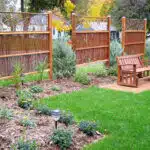






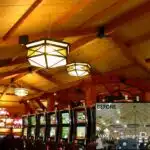

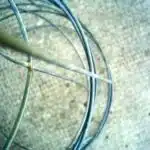

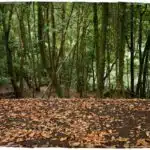


![How To Repair Rotted Wood 17 Texture : Altario Buick Estate Wagon : Rotting Faux Wood Paneling [1 of 2]](https://green-life.blog/wp-content/uploads/2023/05/z1CersK-gCjq-150x150.jpg.webp)


